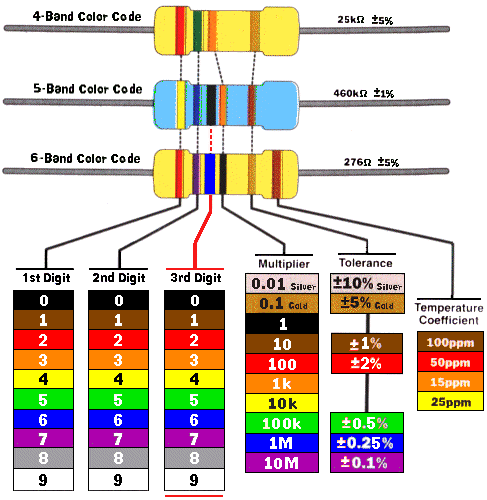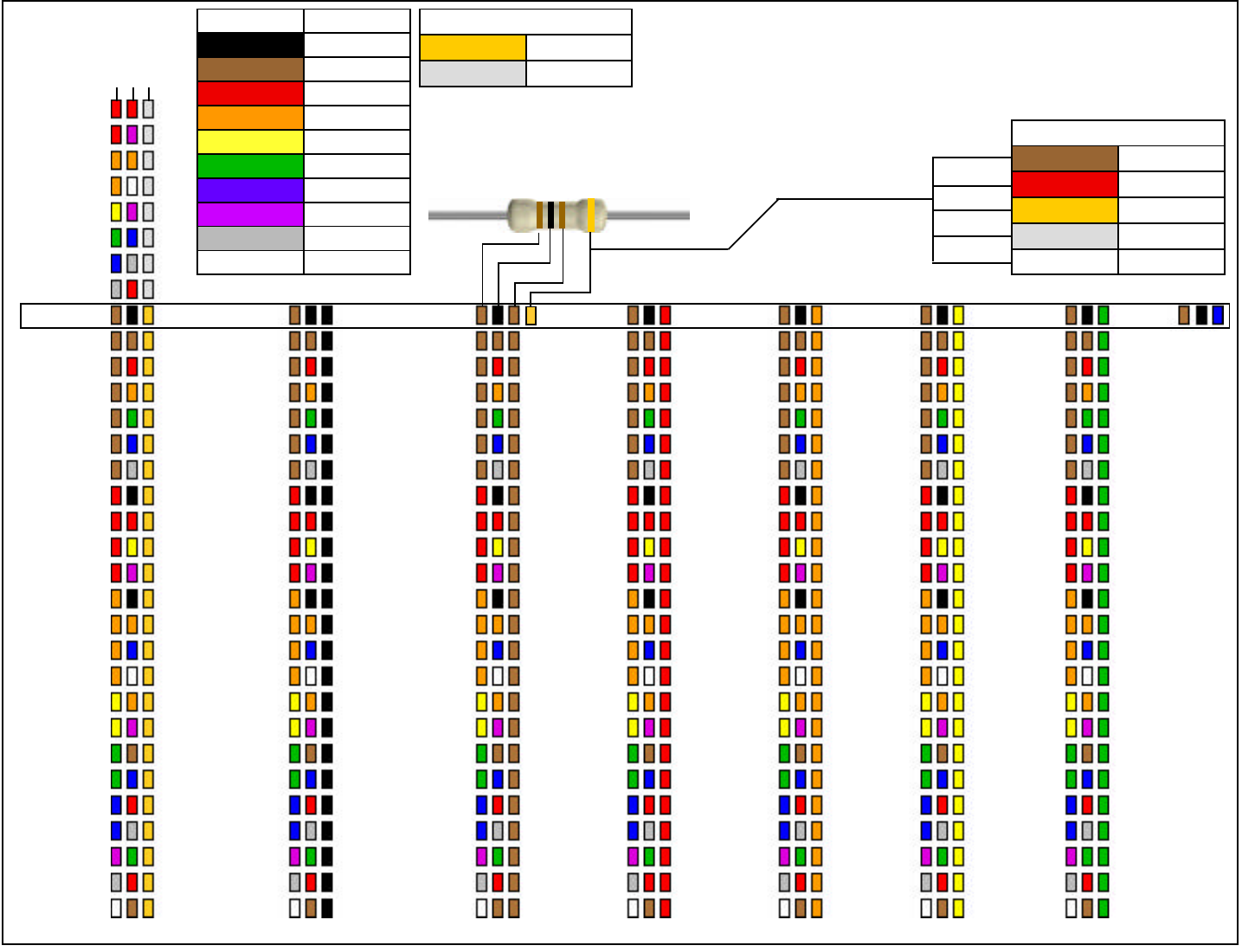

Tolerance is silver which is 10% Therefore the equation is: 2 0 x 10,000 = 200,000 Ohms ± 10%.Write it next to the other 2 numbers with a multiplication sign before it. This is the number you will multiple the other 2 numbers by. Match the 3rd color band with the chart under multiplier.Now look at the 2nd color band and match that color to the same chart.Now look at the chart and match the "1st & 2nd color band" color to the "Digit it represents". This maybe difficult on small or oddly colored resistors. 5-Stripes Resistor Color Codes 1st Color Band First (1st) Number of Value of resistor 2nd Color Band Second (2nd) Number of value of resistor. Look at the 1st color band and determine its color.For blind people, it is impossible to find the resistance of the resistor, because they cannot see the colors. Then read the colored bands left to right. The color coding technique has some drawbacks.To determine the value of a given resistor look for the gold or silver tolerance band and hold the resistor with this band to the right.Resistors are color coded for easy reading.
#Resistor color code code#
Resistor Color Code 1st band color gives 1st number 2nd band color gives 2nd number 3rd band color gives # of zeros 4th band color gives tolerance or ±
#Resistor color code how to#
The two first bands represent the significant digits, the 3 rd is the multiplication factor, the 4 th is the tolerance, and the 5 th is the temperature coefficient.Resistor Color Code Or how to read those little resistors! 5 band resistors with silver or gold 4th band:įive band resistors with the fourth band of gold or silver create an exception and are used on specialized and older resistors. Using the resistor package allows the same automated pick-and-place machines to place the components on a circuit board. Normally, it is used as a wire link that functions to connect traces on a printed circuit board (PCB).

3) The register of value 47106 +- 20 will have the colour code yellow, violet, blue and 4th band will be. Band Two 2nd Digit: The second digit of the resistance value. The first band is brown, which corresponds to the value 1. Band One 1st Digit: This is the first digit of the resistance value. This shows the value of resistance lies between 90 and 110. Resistor color codes always have digits, followed by a multiplier, follower by a tolerance value. Resistors with a single black band are known as a zero-ohm resistors. 2) If the band on the body of the resistor is brown, black, Brown and silver then the register value is 10101 and its tolerance is + 10 that is 100 + 10. The US military handbook MIL-HDBK-199 has more information about reliability. Such is rarely seen in commercial electronics the reliability band is often found on four band resistors. It is specified in the failure rate (%) per 1000 hours of service. Resistors are made based on military specifications sometimes the extra band is included to indicate reliability. This means, the resistance value remains the same but the tolerance is 20%. Sometimes the tolerance band is left blank, then the result of the band 3 resistor. The resistance lies between 53 Ω (5560 ± 5%). Finally, the gold band indicates the tolerance of the resistor which is 5%. The third band is the multiplier, with red representing a multiplier value of 2 (10 2). In the color code chart, you’ll determine that green stands for 5 and blue for 6. In the below figure, the 4 bands are green, blue, red, and gold. The four-band color code is the most common variation, having two bands for resistance value, one multiplier, and one tolerance band. Read more: Understanding Thermistor Four band resistors This table can also be used to specify the color of the bands when the values are known, although an automatic resistor calculator can be used to quickly find the values of the resistors. Therefore, the value of this resistor is 56 102. The third band is the multiplier, with red representing a multiplier value of 2 (102). By using the color code chart, one finds that green stands for 5 and blue for 6. The chart below shows how to determine the resistance and tolerance for resistors. In the example shown here, the 4 bands are green, blue, red and gold. Read more: Understanding carbon composition resistor Color code resistor chart In most cases, this might be the only way to figure out the resistance for instance, when the color bands are burnt off.



 0 kommentar(er)
0 kommentar(er)
